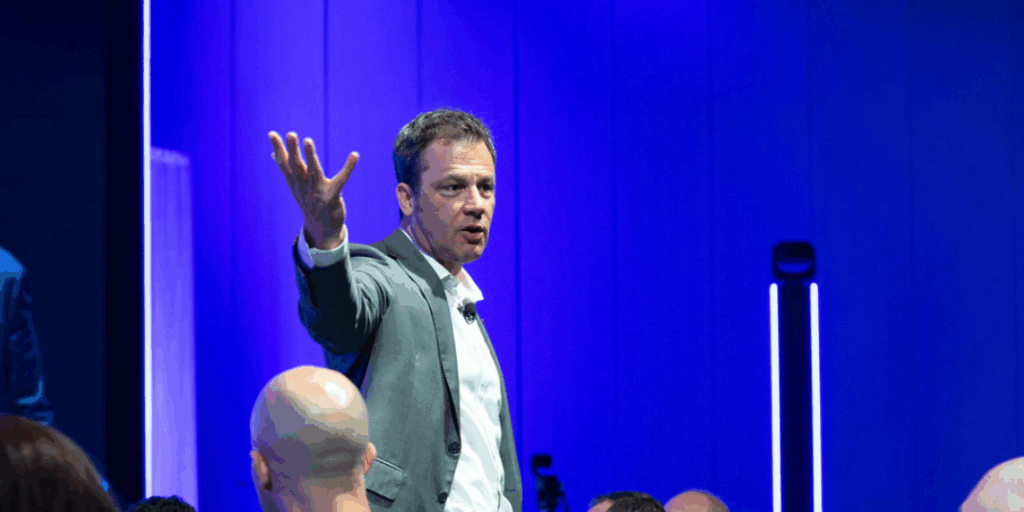If you’ve been having trouble concentrating recently, you’re not alone.
A recent survey conducted by FlexJobs and Mental Health America found that 75% of people have had work-related burnout, with 40% feeling burned out during the pandemic. And according to a July MetLife report on the U.S. workforce’s mental health, two-thirds of employers predict a national mental health crisis within three years.
We’re working three hours longer per day during the pandemic. It’s no surprise that more people are feeling anxious, overwhelmed and exhausted.
But we’re not just tired of working from home. We’re tired of everything. The boundaries between our personal and professional lives have dissolved. No one knows how long this pandemic will last, and those with additional responsibilities — such as parents and those living in at-risk households — continue to navigate an enormous amount of stress. All of us are at risk of burning out, but it’s not inevitable.
Look for these signs of burnout at work — and make sure you’re proactively managing your time and energy to be the best you can be for your family, your clients, and your coworkers.
What Is Burnout — And Do You Have It?
The World Health Organization lists burnout in its International Classification of Diseases as an “occupational phenomenon.” The WHO provides three criteria for diagnosing burnout:
- Feelings of energy depletion or exhaustion;
- Increased mental distance from one’s job, or feelings of negativism or cynicism related to one’s job; and
- Reduced professional efficacy.
One of the most challenging things about burnout is that it can be difficult to tell when you have it. It’s easy to get caught in a cycle of negativity and anxiety, especially during this moment. And once we become accustomed to feeling this way, it can seem normal. It certainly did for me.
So, carefully consider how you are feeling. Are you irritable? Do you dread beginning the workday? Ask yourself these questions, as well as many of the others that the Mayo Clinic recommends.
The Steps I’ve Taken to Conquer Burnout
This past March, I was experiencing my own mental health challenges. I was working around the clock trying to reinvent our business. I was overwhelmed. I was hardly sleeping, and I felt a deep sense of anxiety and despair at the onset of the pandemic.
I knew I was struggling and needed to get back on track. So, I made a conscious choice to get support and to assign a whole new meaning to this moment in time. It is important to remember that, no matter how difficult this moment may be, that you do get to decide how you approach it.
So I re-oriented my work routine to focus on avoiding burnout. These are a few of the things that have helped me stay sane and bring some balance back into my life:
- Designate a place to work from home. My laptop stays in my home office. If I have to work, I work in the office. While I don’t have a commute, having a physically separate space helps me maintain a boundary between the personal and the professional.
- Take regular breaks. I work in 50-minute blocks. Then, I take 10-minute breaks. I use that time to walk around, stretch, make coffee, and let my mind have a bit of white space. It’s proven to boost your creativity and mood, and it helps you physically as well.
- Find safe opportunities for in-person human interaction. Though we mostly work remotely, the team occasionally meets at our office or for lunch — while maintaining strict safety protocols. These moments help solidify our sense of connection and teamwork, and we also find it easier to make headway on our projects when working face to face.
- Self-care and self-love go a long way. Not every day is going to be good. You’re going to have more bad days than you’re used to. But be gentle on yourself. It’s something we all need to do — so that we can keep making it through this. Remember, love always wins.
- Exercise. I’ve always prioritized physical activity, but my health and wellness have taken on a whole new level of importance to me during this pandemic. There is simply no better medicine for stress management and a healthy immune system than a good workout! I continue to see my personal trainer six days a week, and I’ve also been incorporating a whole new set of measurement, management, and recovery protocols into my wellness.
We’re All in This Together
If you need help, reach out to a friend, a coach, or a therapist. It’s helped me immensely, and I know it’s helped others, too.
But addressing burnout is not just an individual responsibility. It’s also about leadership. As leaders, it’s incumbent upon us to act with empathy. Writing in the Harvard Business Review, Jennifer Moss breaks empathy down this way: “That requires stepping outside of your own needs, assessing and removing bias and privilege, actively listening to your people, and then taking action.” Take the time to look at your employees’ workloads. If you can offer a safe hybrid work plan, then do so. But as Jennifer and the leaders she interviews emphasize, listen to your people — and meet them where they are, just as you would your customers.
Additionally, be sure that you are encouraging your employees to take breaks. Many may feel guilty about doing so; at this moment, work can be a lot harder at times. But we need that mental break. Stephen Tang, CEO of Orasure Technologies, is leading his team as they create new COVID-19 tests. Even though his team is helping us through a global pandemic, he’s made sure to emphasize to his team the importance of taking breaks. “Part of my message to my employees is to remember that the root of the word ‘recreation’ is ‘recreate,’” he says, “and that the root of the word ‘vacation’ is ‘vacate.’”
And finally, if you want to bring a bit more awareness and support to your team, I invite you to check out our new Virtual Wellness Series. It’s a series of four live, interactive webinars addressing peak performance, emotional resilience, mindfulness, physical wellness and nutrition. For more information, contact us.
Join Ryan for the Resilient Leadership Workshop
In this interactive, 3-hour virtual workshop, Ryan Estis shares the seven principles to resilient leadership that he has developed navigating disruption as a small-business owner and Fortune 500 executive. This course isn’t just about theory, though. Ryan brings each principle alive with real-life case studies and practical exercises to help you put them into action right away.


![[RE] Featured Image - Sales Growth Strategies A group of employees walking up the stairs while chatting in a concrete office building](https://ryanestis.com/wp-content/uploads/bb-plugin/cache/RE-Featured-Image-Sales-Growth-Strategies-1024x538-panorama-2f257ae51c972272de1c7aed28b01877-.png)
![[RYAN] Featured Image - Sales Manager Skills A person in a business suit shaking hands with a colleague](https://ryanestis.com/wp-content/uploads/bb-plugin/cache/RYAN-Featured-Image-Sales-Manager-Skills-1024x538-panorama-a9e7a83da9a5ca4e1d38b36e87492f06-.png)
![[RYAN] Featured Image - Consultative Sales Approach [RYAN] Featured Image - Consultative Sales Approach](https://ryanestis.com/wp-content/uploads/bb-plugin/cache/RYAN-Featured-Image-Consultative-Sales-Approach-1024x538-panorama-42c09bf12887088a921116094d899f06-.png)
![[RYAN] Featured Image - Sales Tactics [RYAN] Featured Image - Sales Tactics](https://ryanestis.com/wp-content/uploads/bb-plugin/cache/RYAN-Featured-Image-Sales-Tactics-1024x538-panorama-81064ac25e005c4d692a589e275c338f-.png)




